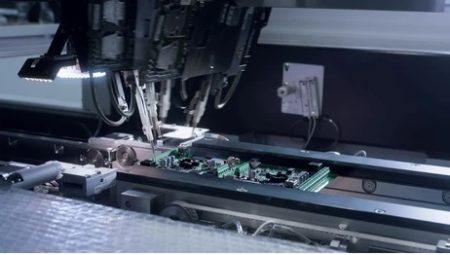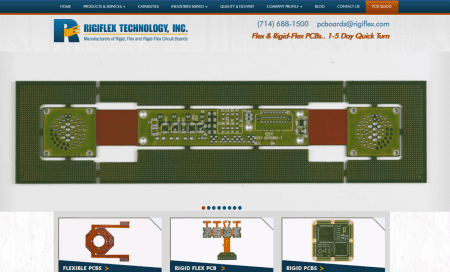- +86-755-23012705
- Building 3, Jinfeng Industrial Park, Fuyong Street, Baoan District, Shenzhen ,China
- [email protected]
Rigid-Flex PCBs (Printed Circuit Boards) combine the benefits of both rigid and flexible circuit boards, offering flexibility, compactness, and durability in applications ranging from consumer electronics to automotive and medical devices. However, due to their complex construction, reliability becomes a critical factor in ensuring the longevity and performance of these devices. In this blog, we will explore the reliability challenges of rigid-flex PCBs and the testing methods used to assess their performance and durability.
Rigid-Flex PCBs are a hybrid type of PCB that integrates both rigid and flexible substrates into one board. The rigid part of the PCB is typically made from FR4 or similar materials, while the flexible portion is usually constructed from polyimide or other flexible materials. These hybrid designs allow for more compact, lightweight, and durable electronics, making them ideal for applications that require high-performance, miniaturized solutions.
Reliability is crucial for any PCB, but rigid-flex designs face unique challenges due to their multi-material composition and the inherent stresses placed on them during manufacturing and operation. Here are some of the key factors that affect the reliability of rigid-flex PCBs:
Thermal Cycling: Rigid-flex PCBs are subjected to temperature variations throughout their lifecycle. The differing coefficients of thermal expansion (CTE) between the rigid and flexible parts of the PCB can cause mechanical stress, leading to cracks, solder joint failure, or delamination between layers.
Mechanical Stress: The flexible sections of the board are often bent and manipulated, which can lead to fatigue and wear over time. This repeated flexing can cause the material to degrade, potentially leading to circuit failures.
Environmental Exposure: Rigid-flex PCBs are often used in harsh environments, such as automotive systems or medical devices, where they might be exposed to humidity, chemicals, and other corrosive substances. These environmental factors can accelerate the degradation of the PCB materials and compromise its performance.
Signal Integrity: The transition from rigid to flexible parts of the PCB can introduce signal integrity issues, particularly at high frequencies. Ensuring that signal quality is maintained across both sections of the board is critical for high-performance applications.
Manufacturing Variability: The complexity of rigid-flex PCBs increases the potential for defects during manufacturing. The need for precise alignment between rigid and flexible parts, as well as accurate vias and bonding, means that defects can have a more significant impact on the reliability of these boards.

To ensure the reliability of rigid-flex PCBs, various testing methods are employed during and after the manufacturing process. These tests simulate real-world conditions to identify potential weaknesses before they become failures in the field. Here are some of the most common testing methods:
Thermal cycling tests involve subjecting the PCB to a series of temperature extremes to simulate the thermal stresses it will experience in operation. The board is heated and cooled repeatedly, usually in cycles ranging from -40°C to 125°C, to assess how well the materials can withstand thermal expansion and contraction. This test helps identify potential solder joint failures, delamination, and material degradation.
A mechanical flexibility test is designed to assess the ability of the flexible part of the PCB to withstand repeated bending without causing damage. During this test, the PCB is bent at various radii, and its electrical performance is monitored to detect failures like trace fractures or open circuits. This is especially important for designs where the board will be flexed regularly, such as in wearable devices.
Rigid-flex PCBs often operate in environments with high mechanical stresses, such as automotive systems or industrial equipment. Vibration and shock tests simulate these conditions by subjecting the PCB to various frequencies and accelerations. These tests help identify weak points in the PCB design and ensure that the board will survive the mechanical forces it may encounter during use.

Environmental stress tests expose the PCB to extreme environmental conditions, such as high humidity, salt fog, and exposure to chemicals or gases. This type of testing simulates the harsh environments in which rigid-flex PCBs are often used. The test helps assess the PCB’s resistance to corrosion, material degradation, and other environmental factors that can affect its reliability.
Electrical performance testing is essential to ensure that the PCB maintains its functionality under different operating conditions. This includes tests like impedance testing, continuity testing, and signal integrity testing. These tests ensure that the rigid-flex PCB continues to perform as expected even after undergoing mechanical or environmental stresses.
X-ray inspection is used to examine the internal structure of rigid-flex PCBs, especially the vias, solder joints, and multilayer bonding. It is a non-destructive method that helps detect hidden defects, such as voids or improper connections, that could affect the reliability of the PCB.

Reliability is a critical factor when designing and manufacturing rigid-flex PCBs, especially given the challenges presented by their unique construction. By subjecting rigid-flex PCBs to a range of tests, manufacturers can ensure that their products will stand up to the rigors of real-world use. Thermal cycling, mechanical flexibility, vibration and shock, environmental stress, and electrical performance tests all play a key role in verifying the performance and durability of rigid-flex PCBs. With careful testing and rigorous quality control, rigid-flex PCBs can continue to provide reliable performance in demanding applications across various industries.
Discover a World of Possibilities with XPCB Limited
At XPCB Limited, we’re here to help you explore new horizons. Our advanced PCB manufacturing, rapid prototyping, and turnkey PCBA solutions make it easy for you to turn your ideas into reality. Trust us to deliver excellence and reliability every step of the way. Join us and experience the power of innovation with XPCB Limited by your side.






XPCB Limited is a premium PCB & PCBA manufacturer based in China.
We specialize in multilayer flexible circuits, rigid-flex PCB, HDI PCB, and Rogers PCB.
Quick-turn PCB prototyping is our specialty. Demanding project is our advantage.
Tel : +86-136-3163-3671
Fax : +86-755-2301 2705
Email : [email protected]
© 2024 - XPCB Limited All Right Reserve
